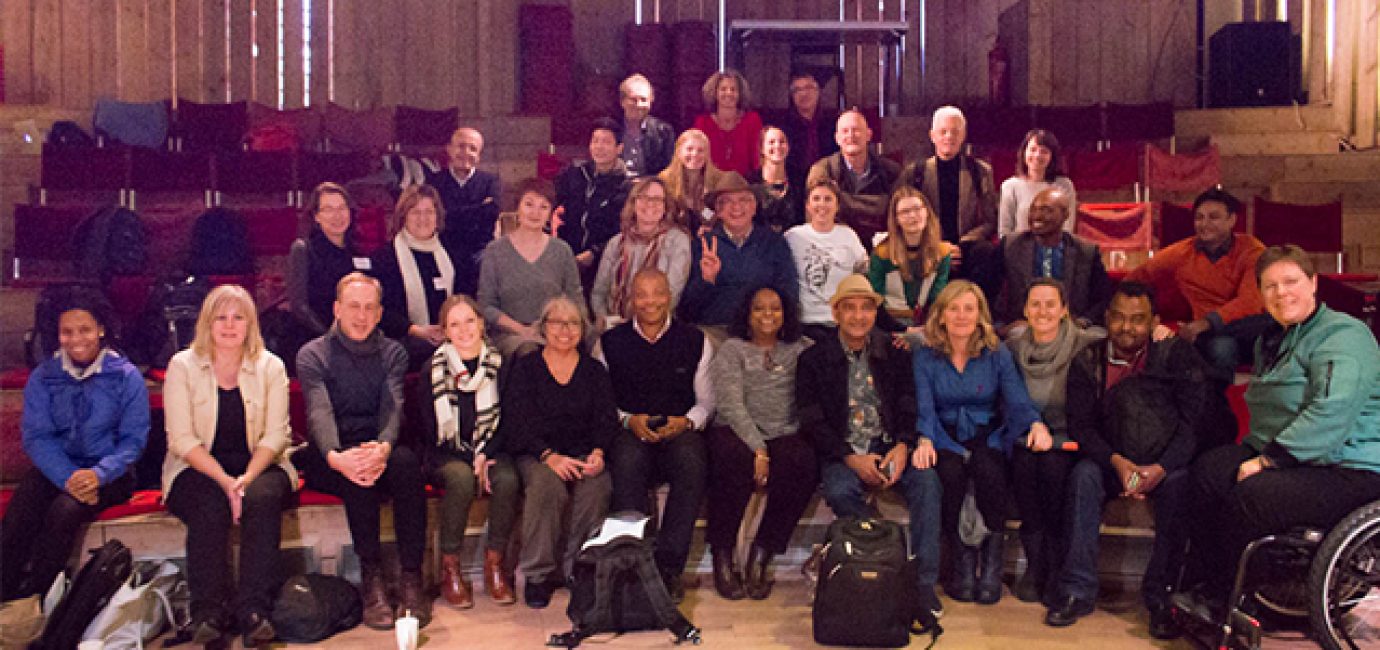Monday and Tuesday, 10 and 11 December 2017, KNCV Tuberculosis Foundation (KNCV) hosted the Getting to Zero Stigma Meeting. The successful meeting brought together advocates from around the world. During the meeting the five new stigma tools that KNCV has spearheaded were introduced: the TB Stigma Measurement Guidance and the Companion Curriculum, the Health Care Facilities stigma reduction toolbox and the Self-stigma toolbox.
Harms of TB stigma
The importance of tackling TB stigma was recently highlighted in a speech by USAID Administrator Mark Green in India. Green repeatedly referred to the harm caused by TB stigma. He explained how women with TB report being isolated and discriminated against in their own homes, rejected by husbands, rejected by in-laws. “A woman who has TB may also be barred from the marketplace where she sells her goods or shunned altogether, eliminating her ability to buy and sell.” (…) “The isolation that often arises from stigma not only means a loss of income and economic opportunity, but it leads sadly to a sense of desperation. And that desperation can prevent afflicted women from seeking out the services needed to identify and to treat the disease.”
All along the patient pathway
Unfortunately TB stigma impedes steps all along the patient pathway. It prevents people from seeking healthcare out of fear of receiving a TB diagnosis. It affects the quality and quantity of TB healthcare services. It can influence treatment adherence and ultimate recovery. And even when patients have been declared TB-free the effects of TB stigma can linger.
 “To stigmatize someone you need to emphasize the differences, you have to create labels, you have to make someone sound dangerous. If you can convince other people of this, you can exclude someone. Even from their own home.”- Ellen Mitchell, Senior Epidemiologist at KNCV and organizer of the event
“To stigmatize someone you need to emphasize the differences, you have to create labels, you have to make someone sound dangerous. If you can convince other people of this, you can exclude someone. Even from their own home.”- Ellen Mitchell, Senior Epidemiologist at KNCV and organizer of the event
Share ownership
KNCV’s philosophy on reducing TB stigma is to build empathy and mutual respect among TB patients and Health Care Workers. It hopes to reduce the tendency to label, blame, shame and control by strengthening the awareness of our own judgements. KNCV wants to leverage all talents, all cadres, all organizations and all stakeholders – to share ownership in the reduction of TB stigma across all actors.
“Stigma needs to be addressed at all levels” – Nadine Ferris France, Founder and Director at The Work for Change
Different types of stigma
Presenters described the different types of stigma they have observed in TB communities. They include self-stigma, public or societal stigma of TB, and the stigma of or among TB healthcare workers.
- Self-stigma refers to the inner feelings of contamination, self-rejection, self-loathing or fear of discrimination that a person might abhor about oneself.
- Public or societal stigma is the discrimination, fear or rejection that members of a community attribute to TB patients and/or their families.
- And stigma of or among TB healthcare workers is the discrimination, fear or rejection that healthcare workers have for TB patients or the discrimination, fear or rejection they experience due to their job.
These types of stigma each highlight how stigma can be explored within the context of TB and will require a specialized intervention approach to reduce stigma within their chosen group.
“People who experience self-stigma don’t seek care and don’t adhere to treatment” – Stephen Macdonald, Communications Coordinator, Irish Forum for Global Health
Use of narratives
A large part of the second day of the meeting focused on debating the role of narratives and other storytelling methods in mass communication campaigns to reduce stigma. While the use of narratives can be a powerful tool to inform and inspire, there is controversy about whether they are as effective in reducing TB stigma. A message that is designed to help a cause could just as easily hurt it if certain elements are not considered.
Efficacy of imagery
Successful narratives, Beth McGinty, Assistant Professor at Johns Hopkins Bloomberg School of Public Health, explained, should include imagery or messaging that portrays the affected individual sympathetically while emphasizing the social (structural) causes of the problem. It should also demonstrate individuals engaging in treatment, show positive outcomes beyond those of just health, and “inoculate” the viewer against common misperceptions.
Foundation of understanding stigma
The presentations and toolkits presented during the Getting to Zero TB Stigma Meeting are additional building blocks in the foundation of understanding stigma, and represent the first materials designed to specifically reduce TB stigma. As toolkits are applied in the field, the greater the collective database of knowledge will become.
KNCV would like to thank everyone who presented and participated in the Getting to Zero TB Stigma Meeting.

